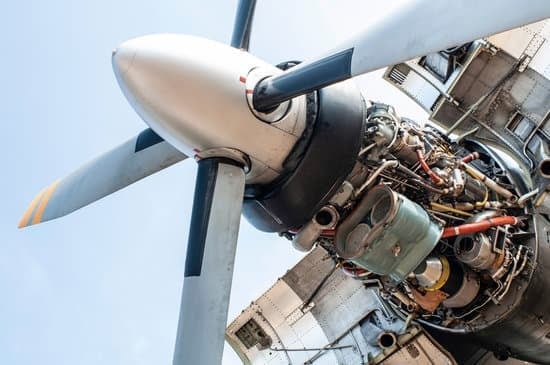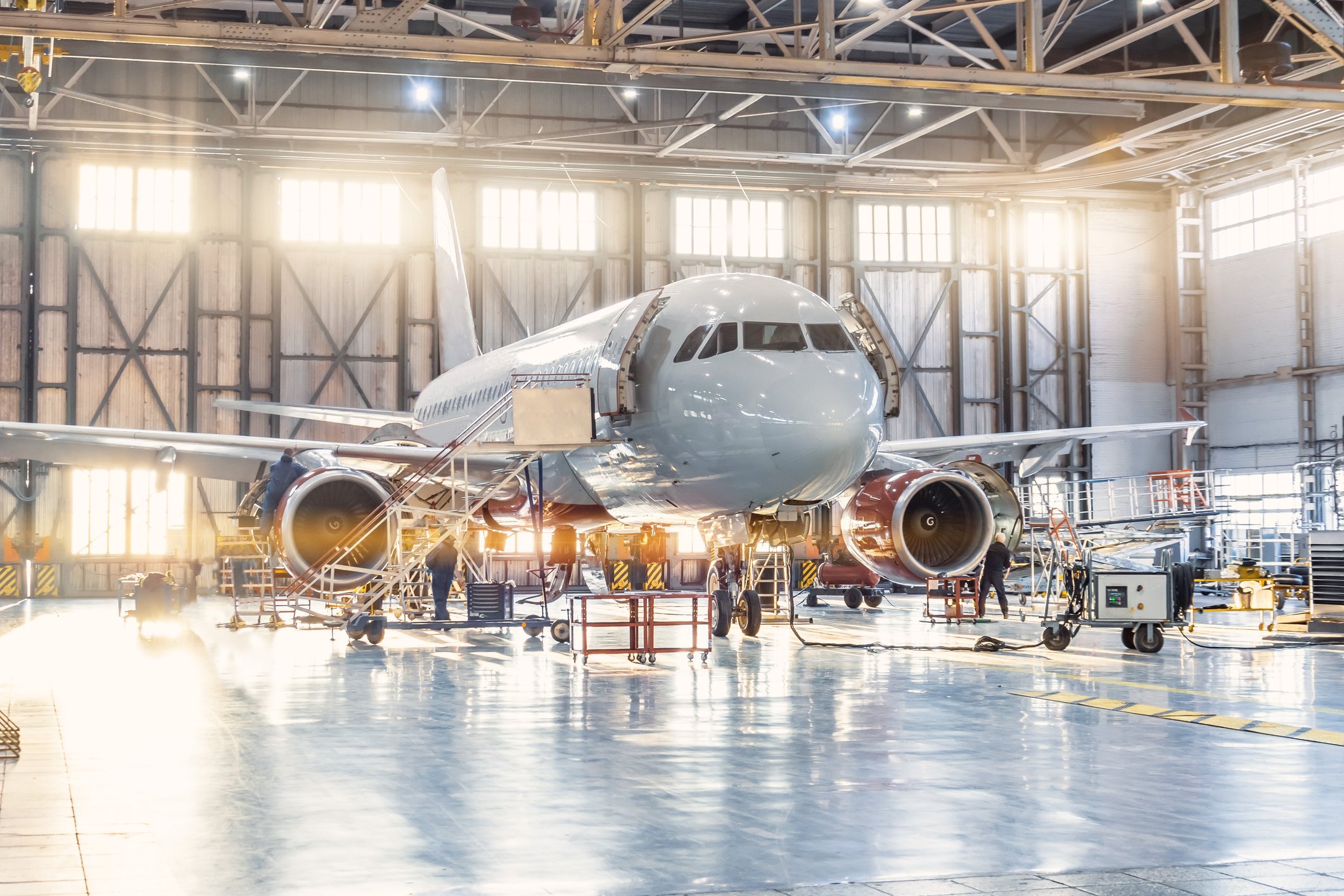Commercial MRO vs. Defense MRO: Key Differences

Maintenance, repair, and overhaul (MRO) is the backbone of the aviation industry, ensuring the safety, efficiency, and reliability of aircraft.
MRO not only encompasses a wide range of activities that are essential for keeping aircraft in optimal working condition, but MRO activities are also divided between the commercial MRO sector and defense MRO sector.
While commercial MRO and defense MRO share common principles of maintenance and upkeep, their distinctive priorities, regulatory environments, and technological applications set them apart. In fact, these MROs can seem like two different worlds.
“The defense world and the commercial world don’t communicate very well … especially here in the United States under the FAA guidelines,” says David Clark, President and CEO of AMFIL Aviation Consulting. “The military follows a completely different procedure that’s based upon older OEM recommendations, but they modify and adapt.”
Commercial MRO: Navigating Efficiency and Profitability
Commercial MRO primarily serves airlines and private operators in the civilian sector. This market is driven by a need for efficiency, quick turnaround times, and cost-effectiveness.
“I think the use of technology, all the way from digitization and going paperless from the documentation and tying that to all the efficiency that drives into the overall process is much higher on the commercial side,” says Manoj Singh, EVP Ramco Systems.
March Shulz, founder of Digital Aircraft, agreed with Singh on the efficiency of commercial MRO vs. military MRO.
“We see the largest fleets in the world in the military forces and they are not managed as efficiently,” said Shulz.
Key components of commercial MRO include:
- Scheduled Maintenance: Airlines conduct routine checks, such as A-checks (light maintenance) and C-checks (heavy maintenance), during scheduled downtime to minimize disruptions to flight operations.
- Supply Chain Management: Timely procurement of spare parts and components is crucial to minimize aircraft downtime. Commercial MRO focuses on optimizing inventory management and supply chain logistics.
- Advanced Technologies: The commercial sector embraces cutting-edge technologies, such as predictive maintenance and data analytics, to predict failures and enhance maintenance planning.
- Regulatory Compliance: Airlines must adhere to stringent aviation regulations and standards, necessitating meticulous record-keeping and adherence to guidelines.
“The commercial world always seems to be really at the tip of the spear for technology and how to improve their maintenance programs. I really wish the defense side would be able to catch up,” says Clark.
Defense MRO: Rigor and National Security
Defense MRO serves military organizations, ensuring the readiness and operational capability of military aircraft.
Unlike the commercial sector, defense MRO involves additional considerations tied to national security.
Key components of defense MRO include:
- Mission Readiness: Military aircraft must be prepared for a wide range of scenarios, demanding extensive testing and validation to ensure mission success.
- Longevity and Upgrades: Military aircraft often have longer service lives and undergo regular upgrades to incorporate new technologies and maintain their combat effectiveness.
- Security Clearances and Protocols: Defense MRO involves stringent security protocols due to the sensitive nature of military operations, requiring personnel with security clearances and strict adherence to classified information handling.
- Customization and Specialization: Military aircraft can have unique configurations and specifications based on their intended use, necessitating specialized maintenance knowledge.
Clark says one of the challenges for defense MRO, especially internationally, is to incorporate new maintenance technologies as needed: “Their technology is lagging severely in creating or modifying maintenance procedures. At least here in the U.S. they try to use technology to their advantage.
Another challenge for the defense MRO is that when it comes to “mission readiness” the commercial sector has a higher percentage of aircraft available to meet customer demands.
“In the commercial world if they had a mission readiness or equivalent of that which is the aircraft availability at 70 percent their business would stop. They would be out of business,” says Singh.
U.S. defense mission readiness is approximately 70 to 80 percent, according to Singh, a figure that would lead to economic losses for the commercial sector.
“If we had dispatch reliability for commercial aircraft like [the military sector] they would be out of business shortly,” agreed Shulz.
There is room for even greater improvement in the international defense MRO sector.
“When we are talking about the maturity, of the lack thereof, on the U.S. defense side, but if you go outside the U.S. to some of the other countries, the maturity level goes even further down, and hence the scope for the opportunity for improvement,” said Singh.
Comparing and Contrasting Commercial MRO and Defense MRO
In the dynamic aviation industry, both commercial MRO and defense MRO play vital roles in ensuring the functionality, safety, and reliability of aircraft.
Aviation support companies can tailor their offerings and expertise to effectively serve both sectors and contribute to their success of the industry if they understand some of these differences:
- Priorities: Commercial MRO prioritizes efficiency, cost-effectiveness, and operational reliability, while defense MRO emphasizes national security, mission readiness, and combat effectiveness.
- Regulatory Environment: Commercial MRO adheres to industry regulations, while defense MRO operates under stricter government regulations and security protocols.
- Technology Utilization: The commercial sector adopts advanced technologies for efficiency, whereas defense MRO integrates technology for combat superiority and strategic advantage.
- Lifecycle Management: Defense MRO involves longer service lives and frequent upgrades, while Commercial MRO focuses on maximizing aircraft utilization within economic considerations.
One issue to consider is what happens to aircraft maintenance when the aircraft shifts between the commercial sector and the military sector.
“Even some of the best aircraft that have the best systems in place, when they get moved over to the defense side don’t necessarily have the systems come across,” said Shulz. “I can see we have a tremendous demand for higher capable systems on the defense side.”
Clark says the key is that the foreign operators of the U.S. legacy platforms tend to follow the U.S. military maintenance, however they certainly don’t try to go into a progressive manner of learning different techniques.
“I have personally witnessed this in a lot of depot facilities around the globe,” says Clark. “Their technology is 1950s technology. They really, really need a lot of help with a lot of different things. Logistics is just one of those critical pieces of their mission readiness.”
Contact Source One Spares today for total logistical solutions in both the commercial and defense MRO sectors, from individual spare parts to comprehensive end-to-end supply chain management programs.



